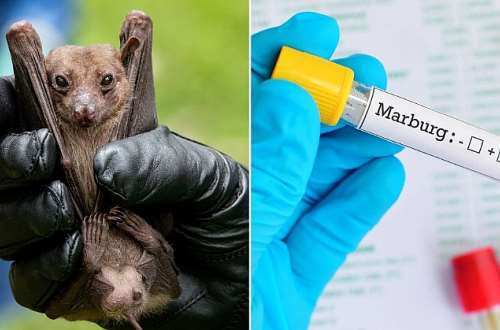
The Nigeria Centre for Disease Control and Prevention (NCDC) has warned that the risk of the Marburg outbreak being imported into Nigeria is high, due to the direct flight between Nigeria and Equatorial Guinea.
The director-general of the NCDC, Dr. Ifedayo Adetifa stated this in a statement released on Friday in Abuja. He added that the proximity of Equatorial Guinea to Nigeria could also increase the likely spread in the country following importation.
The Marburg virus, like Ebola, originates in bats and spreads between people via close contact with the bodily fluids of infected people or surfaces, like contaminated bed sheets. Although not as frequently reported as Ebola, both diseases can cause outbreaks with high death rates.
Adetifa further noted that the agency is aware of the first-ever outbreak of Marburg virus disease (MVD) announced in Equatorial Guinea on February 13, 2023. So far, one confirmed case, nine deaths and 16 suspected cases of MVD have been reported in Equatorial Guinea.
“The death of nine people prompted laboratory testing on samples of individuals experiencing symptoms of fever, fatigue, blood-stained vomit and diarrhoea in two communities of the country’s western Kie Ntem province.
“So far, one confirmed case, nine deaths and 16 suspected cases of MVD have been reported in Equatorial Guinea.
“MVD is a viral haemorrhagic fever (VHF) caused by a virus from the same family as the Ebola virus disease. The primary route of transmission is from fruit bats to humans. Human-to-human transmission is possible through contact with the body fluids of an infected person.
“Currently, there are no available vaccines or therapeutics for the prevention and treatment of this strain of the virus.
“The early initiation of supportive treatment has been shown to significantly reduce the probability of death due to MVD,” Adetifa explained.
According to him, Nigeria has the technical, human (health workforce) and diagnostic capacity required to respond effectively in the event of an outbreak. The country has the diagnostic capacity to test for MVD presently at the National Reference Laboratory (NRL) in Abuja and the University of Lagos Teaching Hospital laboratory Centre for Human and Zoonotic Virology (CHAZVY).
However, the diagnostic capacity would be scaled up to other laboratories in cities with important points of entry (POE) and others as may be required.
“As it has always done in the past following news of MVD outbreaks, the NEVHD TWG conducted a dynamic risk assessment to inform Nigeria’s preparedness following this recent outbreak in Equatorial Guinea on February 17, 2023,” he explained.
The NCDC DG said that the case fatality rate of MVD ranges between 24 to 88 per cent.
“MVD does not currently have an effective drug for treatment or a licensed vaccine for prevention.
“Nigeria has also responded to viral haemorrhagic fever epidemics like the Ebola Outbreak in 2014 and built up her preparedness and response capabilities over the years,” he said.
To mitigate the risk of cross-border importation, the NCDC has activated its Incident Coordination Centre (ICC) to alert mode and has commenced the development of an emergency incident action plan for MVD.
Also, the agency has begun a review to update case definitions for MVD if necessary and is developing MVD guidelines. Follow-up of persons of interest (POIs) on arrival from Equatorial Guinea has commenced and the agency has several control capacities, including trained rapid response teams and an effective infection prevention and control program to limit the risk of spread in the event of a single imported case.

